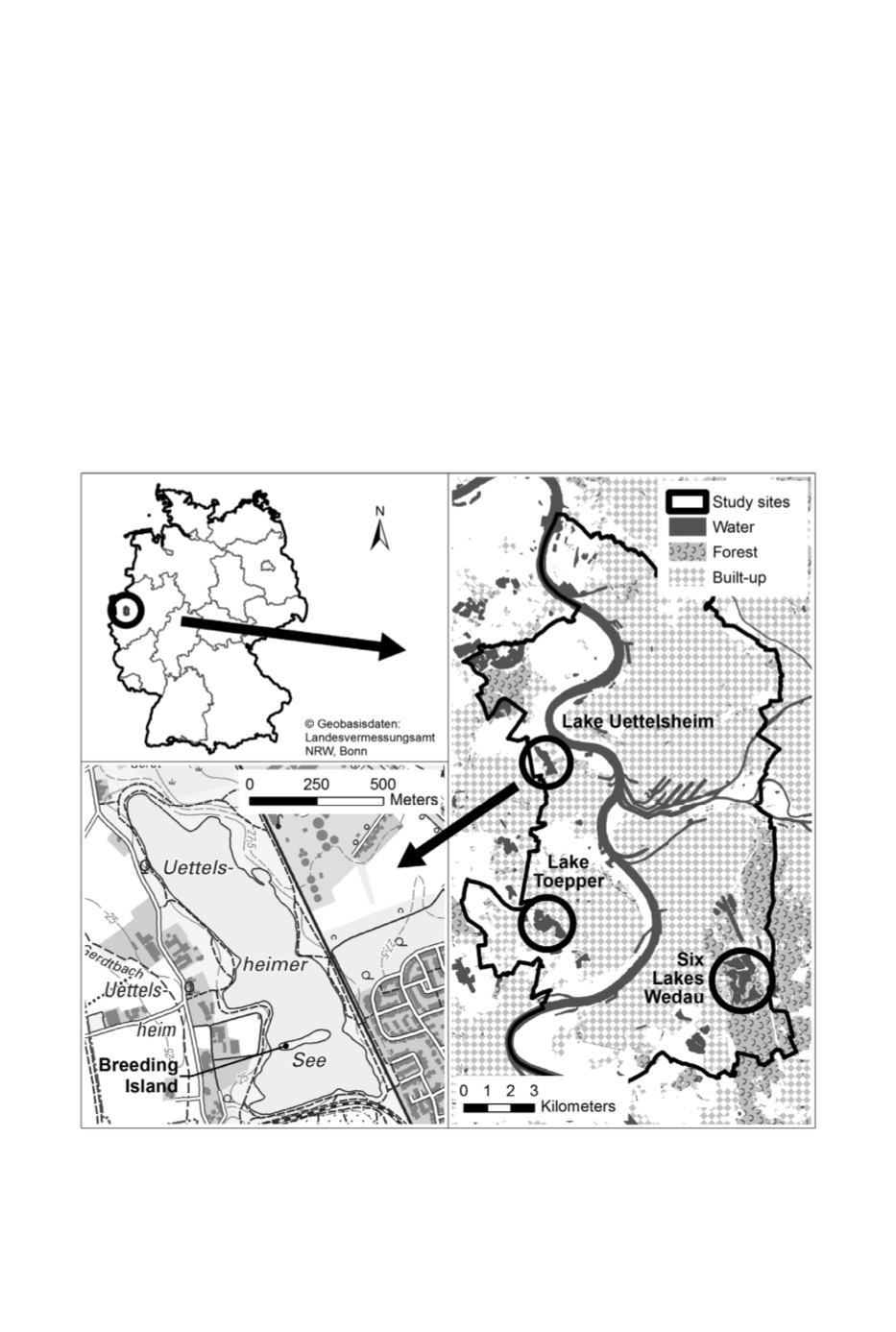
92 Pitfalls of surveying breeding geese
©Wildfowl & Wetlands Trust
Wildfowl
(2013) 63: 90–104
as a nuisance by the public. Nesting sites of
geese were all located on small wooded
islands (1–4 islands per site), ranging in total
size from 0.6–4.2 ha at each site. On the
islands, geese breed in colonies, sometimes
concealed in dense vegetation of Common
Bracken
Pteridium aquilinum
or Blackberries
Rubus fruticosus
. As soon as the young have
hatched, broods move to the lawns around
the lake shores to feed and remain there
until they fledge. Two of the three study
sites are rather isolated and not likely to
receive geese with broods from other
breeding areas (Fig. 1). Only at Lake
Toepper was immigration from nearby lakes
likely (and was suspected during the study).
Nest surveys and population control
measures
Since 2010, all goose populations breeding at
the study sites have been subject to
population control measures by the Forestry
Figure 1.
Map of the sites where Greylag Geese and Canada Geese were studied in 2010–12. The
location of Duisburg, Germany, and the three study sites within Duisburg is illustrated, together with a
more detailed plan of the main site at Lake Uettelsheim.


